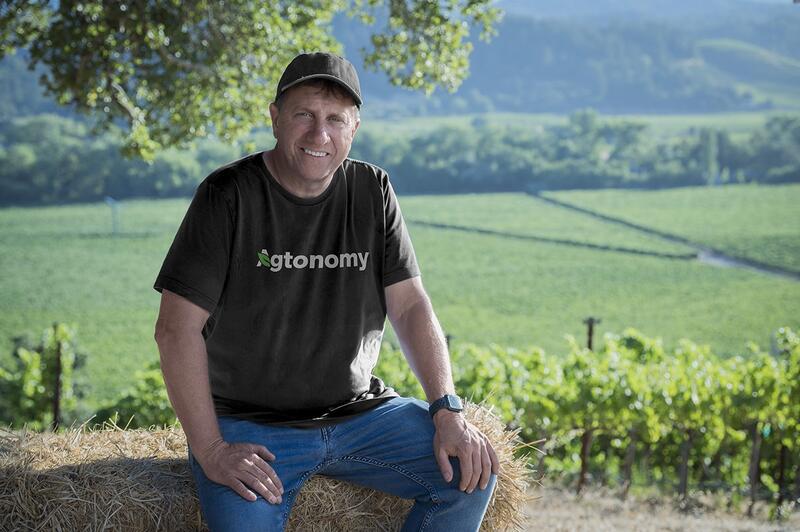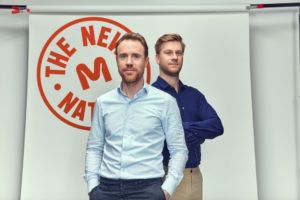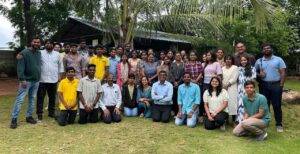“If there was ever a computer engineer/farmer that dreamed of building an autonomous tractor manufacturing company, it’s me,” Tim Bucher, cofounder and CEO of California-based Agtonomy, wrote last year in an AgFunderNews guest post.
He has yet to build that autonomous tractor for a very simple reason: “Farmers don’t have the time to waste on agtech startups to manufacture machines that take years to deliver and have yet to earn grower’s trust.”
Bucher would know, himself being a lifelong farmer, first in dairy then in speciality crops.
His solution was to instead develop software for autonomy that could then be paired with machines from existing tractor manufacturers.
Agtonomy partners with these companies, providing them software to automate operations in speciality crops, such as vineyards, and also alleviate the ongoing labor crunch.
Meanwhile, he continues to run his own business, Trattore Farms and Winery in Sonoma County, which grows grapes and olives.
Since launching, Agtonomy has launched TeleFarmer, which allows farmers to control various tasks through a an app, secured a partnership with Doosan Bobcat, and showcased its wares at events like World Ag Expo.
In May of 2024, Agtonomy got a major vote of confidence when former John Deere VP Jorge Heraud joined the startup’s board of directors. It also raised $33 million that year, and in 2025 has expanded its pilot program in Washington state.
AgFunder spoke to Bucher recently on what happened to be the company’s fourth anniversary.

AgFunderNews (AFN): Why did you start an agtech company?
Tim Bucher (TB): I grew up a farmer, working on tractors, building tractors. If you look at my background, there’s nobody in the world who would rather build a tractor company. But the farmer in me said that would just be stupid. There are these incumbents out there that have, for some of them, been doing this for centuries.
I went to undergrad at University of California Davis and, incidentally, took a computer course. It was in a 500-person auditorium, [learning a] programming language called Fortran. And I’m a farmer, and I’m scared, and I’m sitting in the back of that classroom, and the professor starts talking, and I understood everything he said.
I had already established my own farming operation in high school, and I kept that going in college, and I went on to grad school at Stanford for computer science. I was doing agriculture and technology in parallel for decades.
I would be commuting to Silicon Valley and then going [back to the farm in] Sonoma County every every week, sometimes on a daily basis.
AFN: Why focus on automation?
TB: I was already automating everything [on the farm]. I had automated a computer-controlled water-recycling plant from my cellars and from my olive oil production mills. I had created all kinds of irrigation systems. I had fermentation tanks I could control from anywhere in the world. So I had automated everything except for one thing: the farm labor outside, in the orchards and in the vineyards.
A decade ago, I didn’t have to pay overtime until 12 hours had elapsed. Then it went to 10 hours. Then, in 2021, it went to eight hours, and labor costs were skyrocketing. Consumer preferences were changing, and those preferences were for things that cost farmers more to farm. I always tell people it’s great to want “farm to table,” but you don’t necessarily want to pay [the amount] for the product that lets the farmer make money.
Meanwhile, 50% of my expenses were farm labor — that I couldn’t even hire for, by the way. If I lost someone, it would take me sometimes months, and I would have to drive up from Silicon Valley to do the jobs myself.
I said, “there’s got to be a better way.”
One day, I took a flight on Southwest Airlines [and watched] a National Geographic documentary called “Expedition Mars, the Story of Spirit and Opportunity,” about the Mars Rovers in the 90s.
When these rovers encountered a rock, they just stopped and they radioed JPL (jet propulsion laboratory), and JPL did some software upgrades, and then a week later, they would download it, and then the Mars rover would go left around the rock.
And my head exploded, and I said, “What if we actually take that and apply it to permanent crops, or high value crops, which we really haven’t had automation in?”
AFN: How does Agtonomy’s offering improve speciality crop production?
TB: With permanent crops, sometimes you don’t see the sky for kilometers at a time, if you’re in a walnut or a citrus grove; sometimes you’re in tunnels forever, so it’s a little bit more difficult. Now we have the compute and the AI to actually create models to train on how to exploit the structure of the crop itself, which was the whole idea I came up with, and we based our technology on that. That’s how I built a prototype.
I showed it to my cofounder [Valerie Syme, COO] and she did a bunch of research and said, “Permanent crops have three times more labor needs, three times more equipment needs, and you’re creating a solution that can help solve this big labor gap that exists there and is only getting wider.”
AFN: How does your background in farming benefit you working in agtech?
TB: It’s a big unfair advantage.
There are four of us now at Agonomy that have our own farming operation, and all four also have engineering degrees.
It’s called ag tech for a reason: you have to lead with ag, and then you can bring in the technology. Technologists who go to farmers and say, “I know how to farm better than you, here’s a technology solution” just get laughed out of the room.

AFN: Tell us a notable story from the last four years.
TB: First: you know how you always hear about startups that were founded in a garage? I’m proud to say we were founded in a barn.
We did our first autonomous mission in 2021, in this field of a grower, and [the autonomy on the machine] worked. We were celebrating under the pop-up tent. This was the first fully autonomous run, and all of a sudden the alarms went off and the vehicle just stopped.
We looked over at the vehicle, which was now pretty far away from us. The cows were curious and our software had successfully stopped and avoided a collision with them. Then the cows started to lick the tractor, thinking it had some food for them.
This first prototype was named “Spirit,” after the famous Mars rover. Like Mars, there isn’t traffic in a field, and thus one can just do a safety stop and alert the operator if there is a situation that you encounter that has not been seen before. We had put in human detection; we hadn’t put in cow detection.
Since I grew up a dairy farmer, it brought everything full circle that day.



